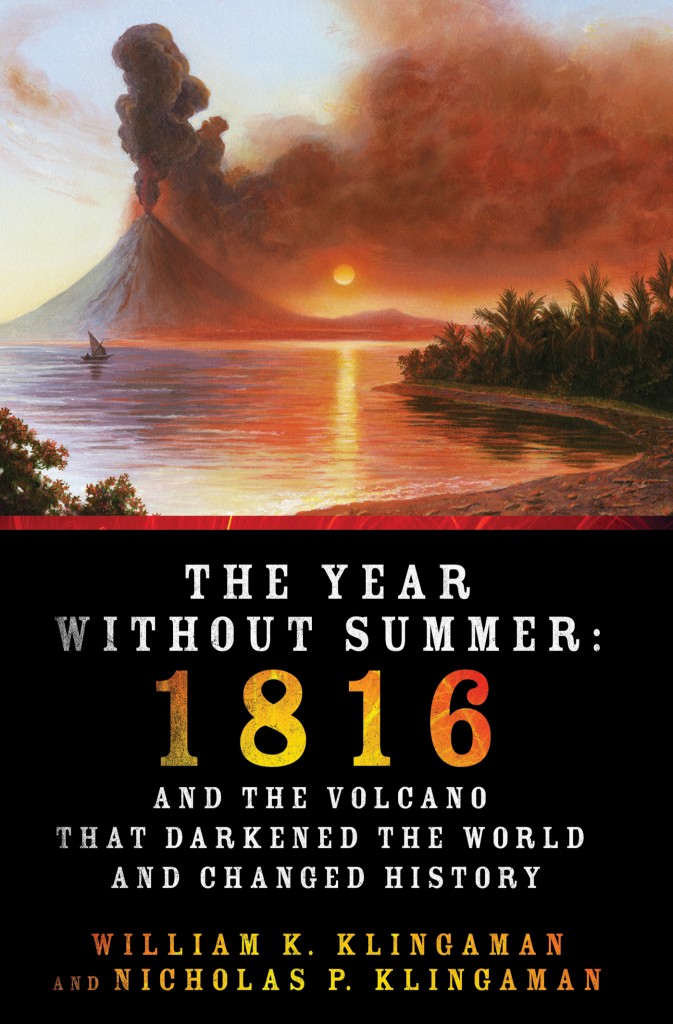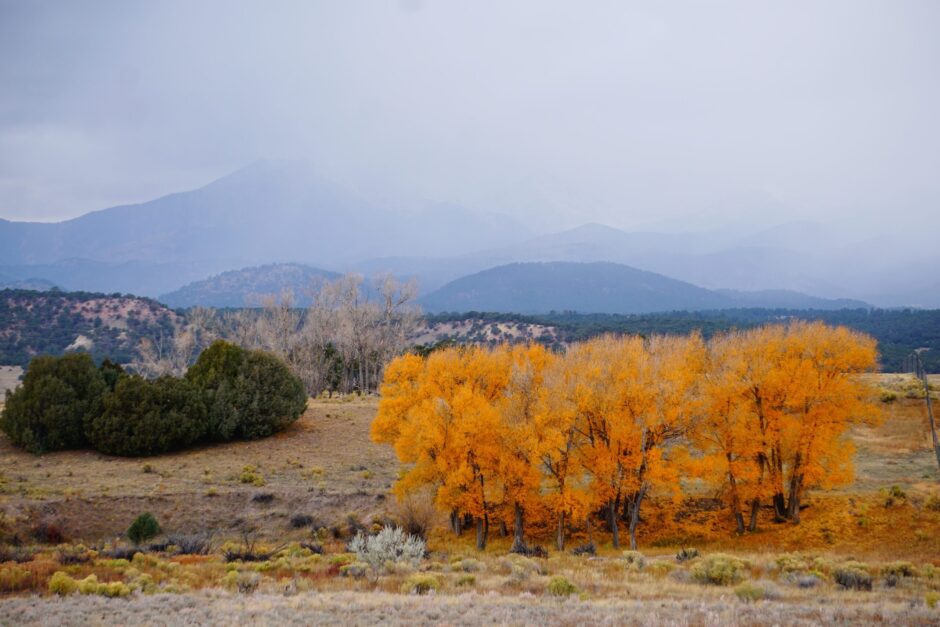So I’m reading William K. Klingaman and Nicholas P. Klingaman’s The Year Without Summer: 1816 and the Volcano That Darkened the World and Changed History (published just last month), which is billed as similar to Simon Winchester’s outstanding Krakatoa: The Day the World Exploded (2003), and so far it’s living up to that comparison. I’m fascinated by past examples of climate change, not only for the insight into history these accounts provide—David Keys’s Catastrophe (1999) is still one of the best—but also for the implication they have for our future. The Year Without Summer (a title that provokes a memory of that animated favorite, The Year Without a Santa Claus) is about the eruption of the volcano Mount Tambora in Indonesia in April 1815, but it’s scope stretches far beyond the geology of the volcano (though it covers that aspect as well) and into the cultural/political spinoff effects. 1816 is famous for being the year that Mary Wollstonecraft Shelly wrote Frankenstein (and while staying at the same estate in Switzerland with Percy Bysse Shelly, John William Polidori wrote The Vampyre, known as one of the earliest vampire tales in English). Legend has it the summer was so cold and dreary they had to stay inside and tell or write spooky stories. What is well documented is that crops failed disastrously in New England and elsewhere, causing cultural and economic upheavals. It’s like The Day After Tomorrow, only in reverse—more like Two Centuries Before Yesterday. Well, not quite.

- November 2025
- October 2023
- September 2023
- September 2021
- April 2020
- September 2019
- May 2019
- August 2018
- February 2018
- January 2018
- October 2017
- August 2017
- June 2017
- May 2017
- March 2017
- February 2017
- November 2016
- October 2016
- May 2016
- April 2016
- March 2016
- February 2016
- January 2016
- November 2015
- October 2015
- September 2015
- June 2015
- May 2015
- April 2015
- March 2015
- December 2014
- September 2014
- August 2014
- May 2014
- March 2014
- February 2014
- January 2014
- December 2013
- November 2013
- October 2013
- September 2013
- August 2013
- July 2013
- June 2013
- May 2013
- April 2013
- March 2013
- February 2013
- January 2013
- December 2012
- November 2012
- October 2012
- September 2012
- August 2012
- July 2012
- June 2012
- May 2012
- April 2012
- March 2012
- February 2012
- January 2012
- December 2011
- November 2011
- October 2011
- September 2011
- August 2011
- July 2011
- June 2011
- May 2011
- April 2011
- March 2011
- February 2011
- January 2011
- December 2010
- November 2010
- October 2010
- September 2010
- August 2010
- July 2010
- June 2010
- May 2010
- April 2010
- March 2010
- February 2010
- January 2010
- December 2009
- November 2009
- October 2009
- September 2009
- August 2009
- July 2009
- June 2009
- May 2009
- April 2009
- March 2009
Recent Posts
- They’re Heeeerrrreee! “The Age of Disclosure” Is a Game-Changer for UFO Aficionados (& All of Us)
- Aliens Among Us: Probing Hillbillies and Freaking Shut-ins, How Netflix’s “Encounters” and Hulu’s “No One Will Save You” Prep Us for the Coming Alien Apocalypse, Kind of
- My Life as a Bob Odenkirk Character: On How Watching Netflix’s Black Mirror episode “Joan Is Awful” Mimicked My Experience of Watching the AMC series Lucky Hank
- “Bobcats, Bobcats, Bobcats”: Animal Life and a Tribute to “Modern Family”
- “The North Water”: This Ain’t Your Daddy’s Moby Dick
Recent Comments
No comments to show.
